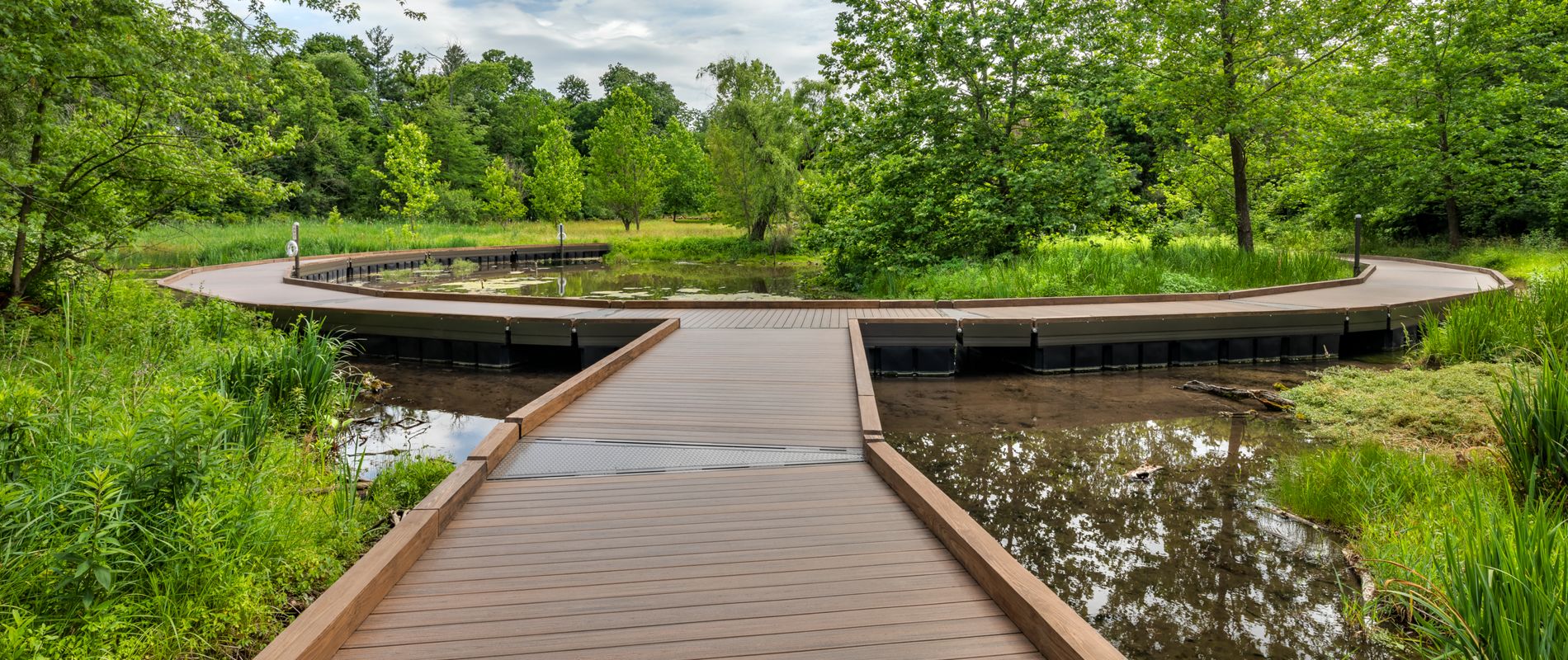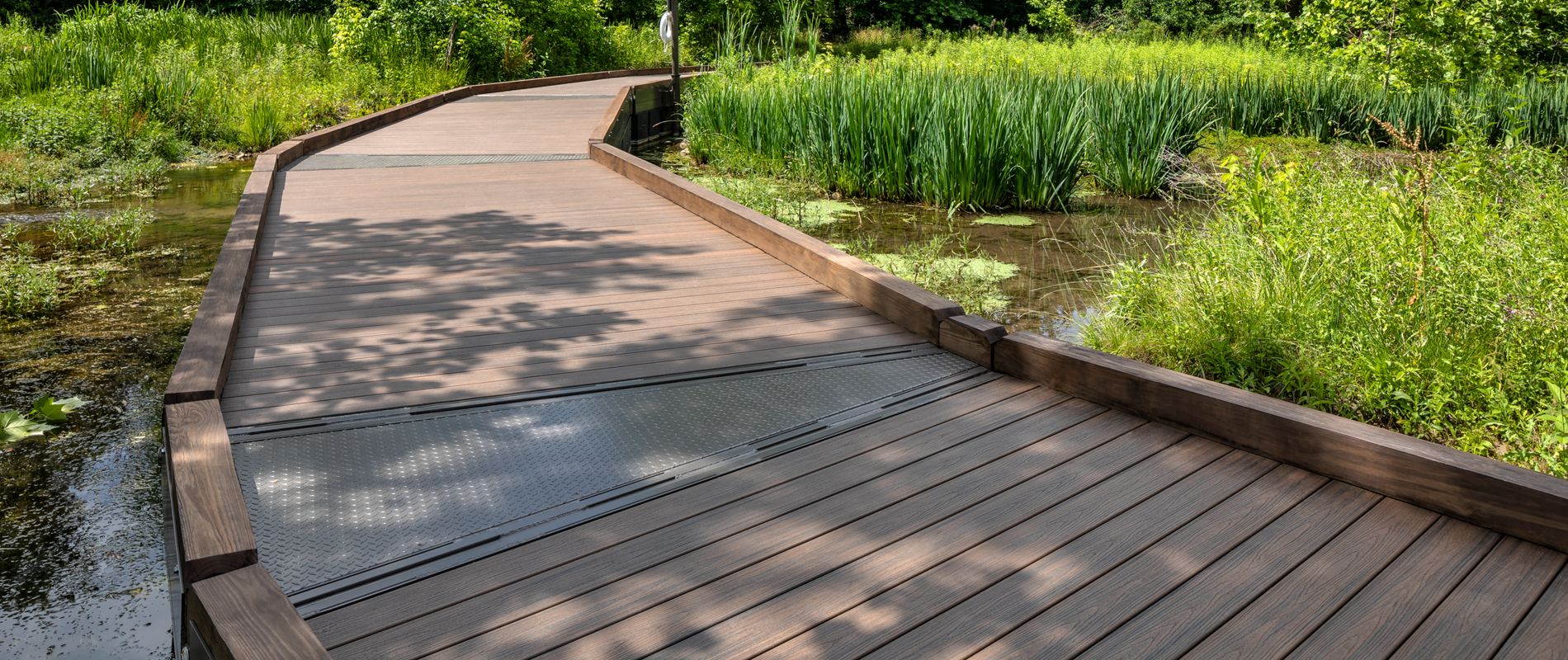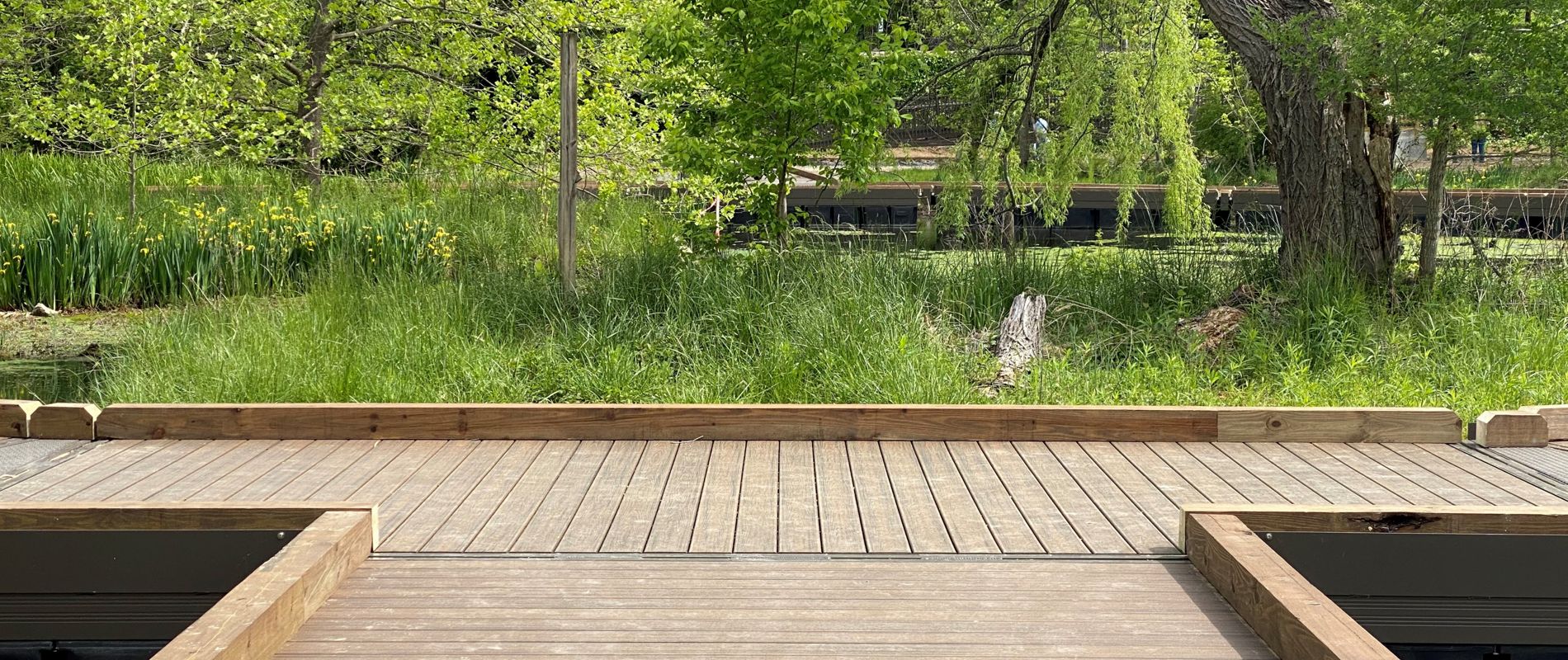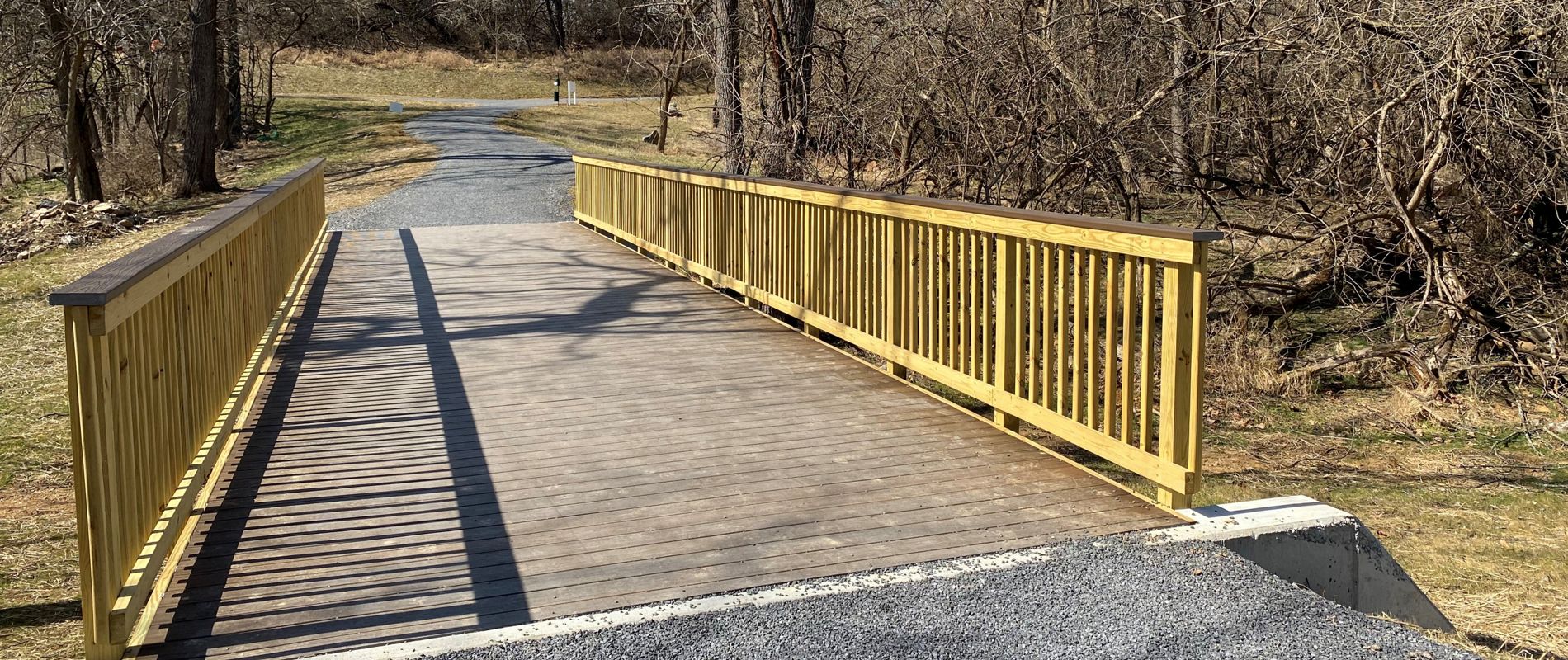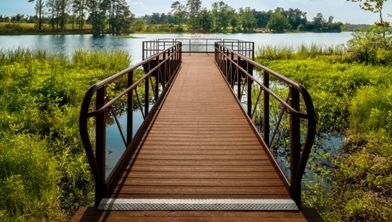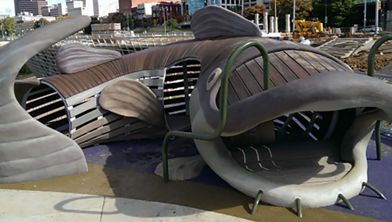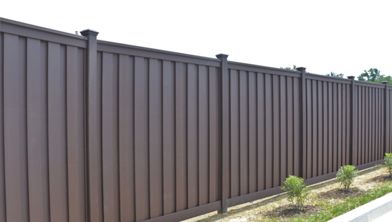Floating Boardwalk at the Museum of the Shenandoah Valley
Trex partnered recently with The Museum of the Shenandoah Valley in Winchester, Va., headquarters of Trex Company, to build a three-mile trail system through Virginia’s largest art park.
The Trails at MSV project set out to preserve the museum’s surrounding 90-acre green space. Eight years in the planning, at a cost of $9 million, the project was made by possible by more than 1,000 donations and grants.
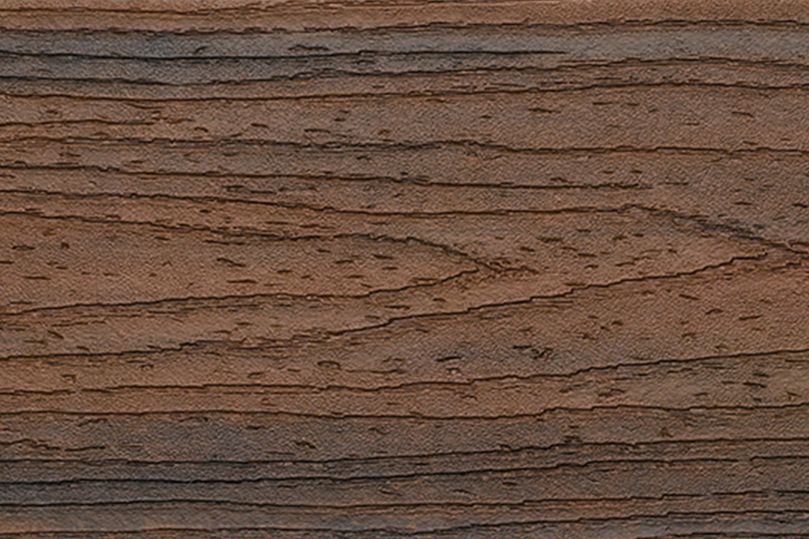
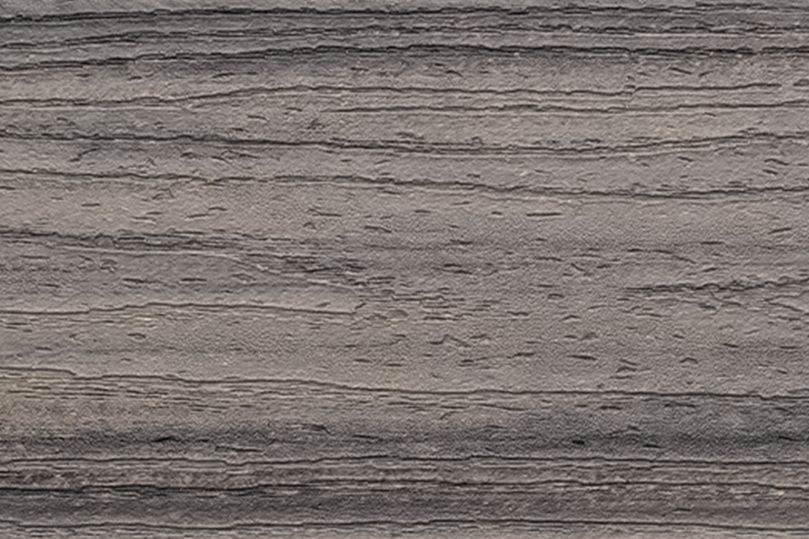

To get a better sense of color and grain, order free samples.
Trex decking was used to build two 60-foot bridges along the trails, as well as a floating boardwalk atop a wetlands, home to mallards, birds, cranes and turtles. Preserving the wetlands area presented a special challenge that required permits and direction from the Army Corps of Engineers. To limit disruption to the wetlands, the usual wood support pilings were not allowed. Architects and engineers, instead, spend 16 months planning an alternative which resulted in an impressive feat of engineering.
The challenge, said Mike Denton, managing director of Buggs Island Dock Service in Clarkesville, Virginia, was “like putting people on the moon. Most material doesn't like to work in curves. Here, not only is it a curve, but it’s a circle.
Engineers designed the 9'8" boardwalk with four poles that keep the circular structure stationary while it bobs horizontally on wedges over aluminum support. The 720-square-foot boardwalk was made with 1,382 Trex composite decking boards, chosen because of its “curvability” and superior durability over wood and other materials. The boards are held together with 11 fasteners per board, and a hinge joint allows for the flex movement while relieving stresses as it morphs into different shapes.
“You get a lot of splitting with regular lumber. With a composite material, you don’t get that. That’s a big advantage,” said Tim Painter of Painter-Lewis, based in Winchester, one of the consulting engineers who developed the site plan.
Two bridges made from Trex are part of the three miles of paved, mulch and turf trails that offer visitors space to bike, run or walk as they meander adjacent to a working farm; historic house and gardens; oak and hickory allees; and unique art installations that pepper the property.
The trails are intended as an outdoor extension of the museum’s galleries, offering a unique area to learn about the Northern Shenandoah Valley of Virginia and the surrounding region. Conservation and education events are also planned.
One of the goals was to make this a “living classroom,” according to Painter.




